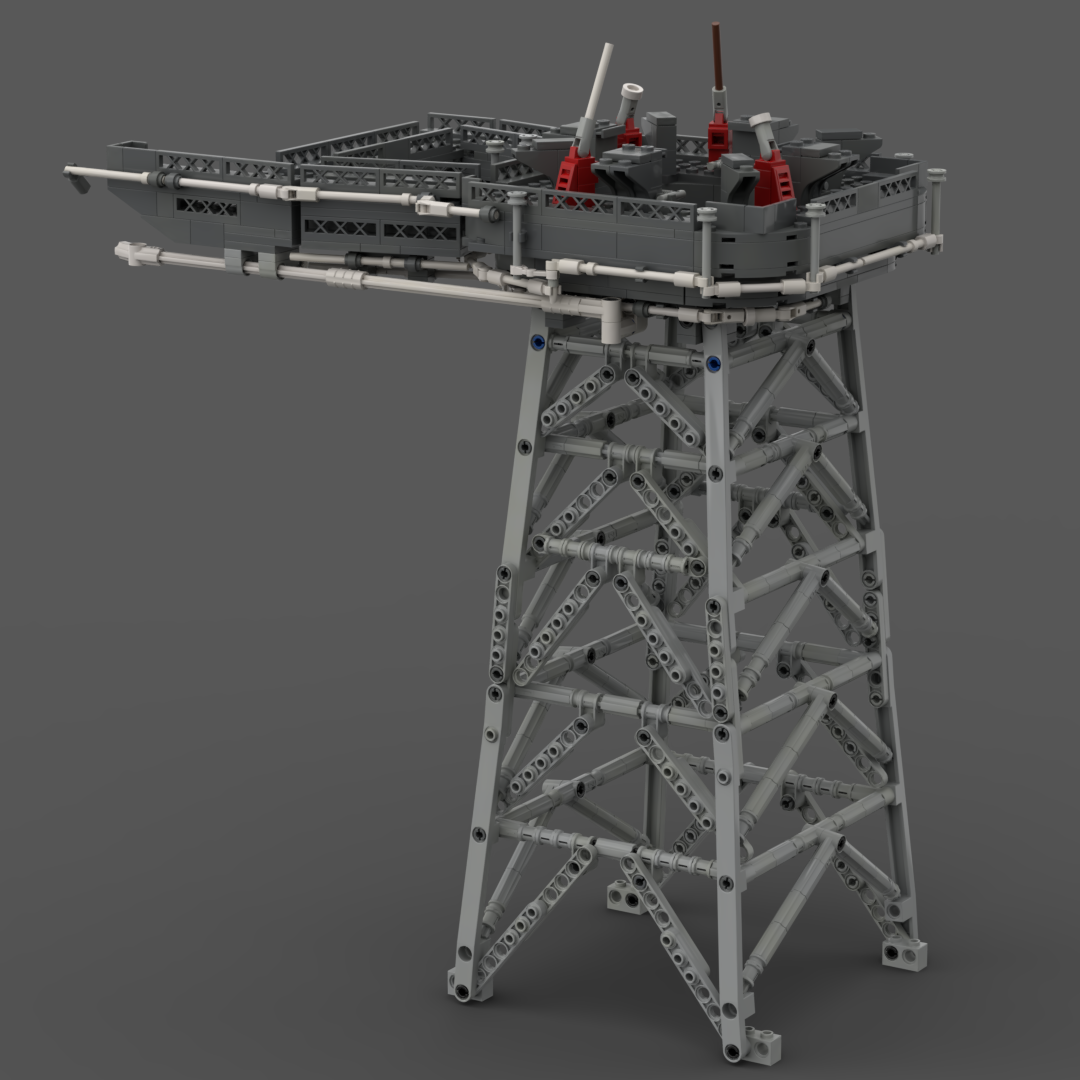
LEGO Designer:
David Welling (Luxordeathbed)
Designed:
July 2018
Categories:
Launch Pads, All, Apollo Program, Space Agency - NASA
Launch Vehicle Details
Stages:
Length:
Diameter:
Mass at Launch:
Low Earth Orbit Capacity:
Total Thrust:
Apogee:
Class:
The LC-39 pedestal or “milkstool” was a scaffolding added to Launch Complex 39 so that the Saturn Ib could be prepared for lift off from a launch structure built for the much larger Saturn V. It was used for the last three Saturn Ib missions since the launch pad originally built for the Saturn 1 and Saturn 1b had to be mothballed for budgetary reasons.
Even before NASA reached its goal of landing men on the Moon it became clear that a financial reckoning was in the making. National priorities were shifting fast: The Vietnam War proved costly, Counterculture made the US face in-ward, and the first strains on the economy were beginning to show. Decisions had to be made how to proceed after the massive Saturn V would be history, and NASA began collecting ideas in the “Apollo Applications Program (APP), a program designed to push Apollo hardware beyond lunar missions. For now, NASA remained committed to the Saturn IB as a launch vehicle.
Maintaining launch complex 34 and the pad crews during a multiyear hiatus was a costly venture. Originally an Army project, its design had suffered from inadequate funding. During seven years of use, the complex had undergone major modifications including changes to support manned flights. LC-37 had been designed by NASA engineers in 1961 with a better understanding of Saturn requirements; its service structure, launch umbilical tower, and blockhouse were more appropriately sized to IB operations. But it had not yet been altered for manned launches, and that change would take nearly two years.
As another option, the Advanced Programs Office at the Kennedy Spaceflight Centre wanted to used complex 39 (which was also used for the still ongoing Saturn V launches) to launch AAP missions. It would be a challenge, however. Everything at this newer launch complex was oversized and mismatched for the Saturn IB owing to the Saturn V’s titanic size. It was also a launch complex designed around the mo-bile launch complex. While the Saturn IB was assembled on the launch pad, the Saturn V was stacked in the controlled environment of the Vehicle Assembly Building on the mo-bile launch platform that then crawled its way to the launch pad.
The biggest problem in launching the IB from LC-39 was adjusting the launch facilities to the smaller rocket. Since an Apollo stacked atop a Saturn IB was 43 meters shorter than the Apollo-Saturn V, much of the supporting equipment would not be correctly positioned. Boeing proposed to mini-mize modifications by placing the Saturn IB on a 39-meter pedestal so that the second stage and instrument unit, as well as the Apollo spacecraft, would stand at the same height as the Saturn V configuration. Thus the launch team could use the launcher’s upper service arms and the work platforms of the service structure and assembly building.
The pedestal (milkstool in local parlance) was Skylab’s most distinctive feature at LC-39. A 250-ton steel structure with four legs and a series of horizontal and diagonal pipes sup-porting the main platform, the milkstool featured a nearly 28-foot diameter exhaust hole and all the support arms, fuel pipes, and electrical lines needed to prepare the Saturn IB for launch. And it was tricky to build. Not only did the milkstool have to be rigid enough to not buckle under the stress of a rocket launching on top of it, it could only weigh as much as the Saturn V’s S-I stage it was taking the pace of. Any heavier and the mobile launch platform wouldn’t be able to support its weight. The modifications worked. The Skylab space station was launched on May 14, 1973 on the last Saturn V ever to leave the Earth. The first Skylab crew followed right on its heels on May 25, 1973. The first Saturn Ib to launch from a milkstool — there were no unmanned tests — did so without a problem. The two subsequent manned missions and the Apollo half of the Apollo-Soyuz Test Project also used the milkstool on their paths to a successful orbital mission.
Downloads
This milkstool has been designed specifically to fit with Valerie Roche’s LUT. For use with Nathan Readioff’s, Joseph Chambers’ or Bailey Fullarton’s versions will require addition modifications to both the LUT and the Milkstool.
The bottom four umbilical arms will need to be removed and the pit will have to be modified to mount it.
Also white O2 lines will need to be modified.
Part count: 1098 bricks, 99 lots.
| Unit | width | length | height |
|---|---|---|---|
| Studs | 40.1 | 21.0 | 46.6 |
| Inches | 12.6 | 6.6 | 14.7 |
| Centimetres | 32.1 | 16.8 | 37.3 |
No external URL provided.
Launch History information from space.skyrocket.de
Launch History information from space.skyrocket.de
Related Posts
None found

